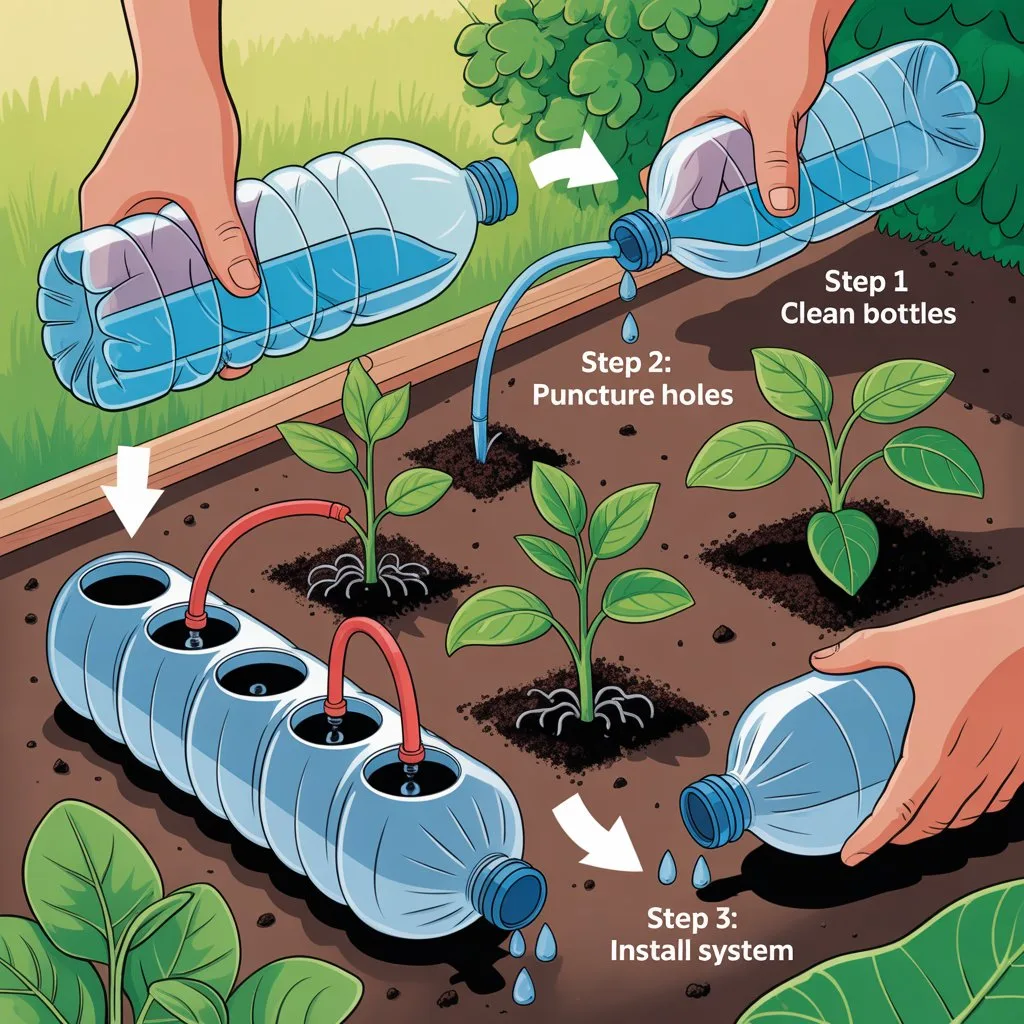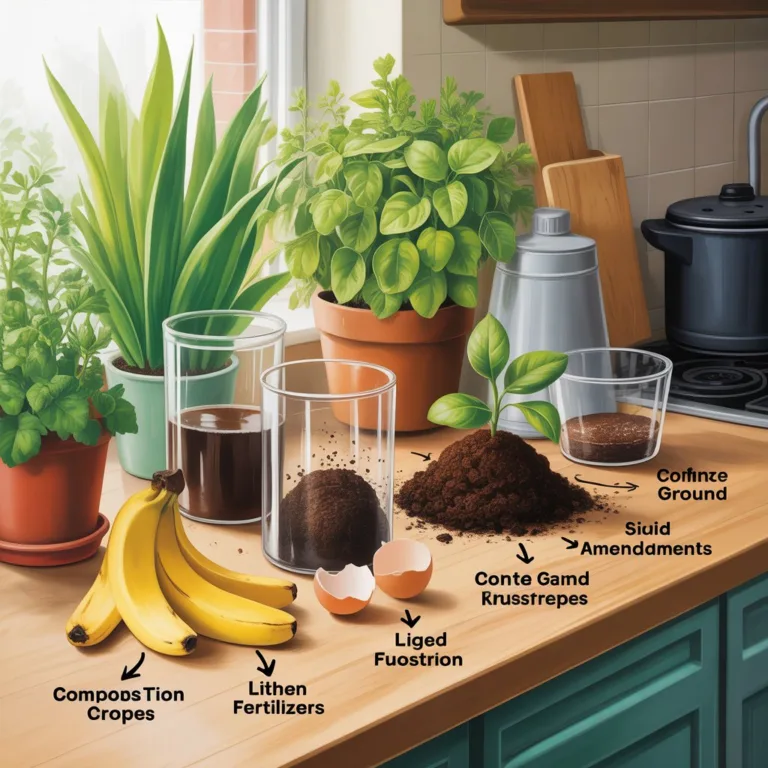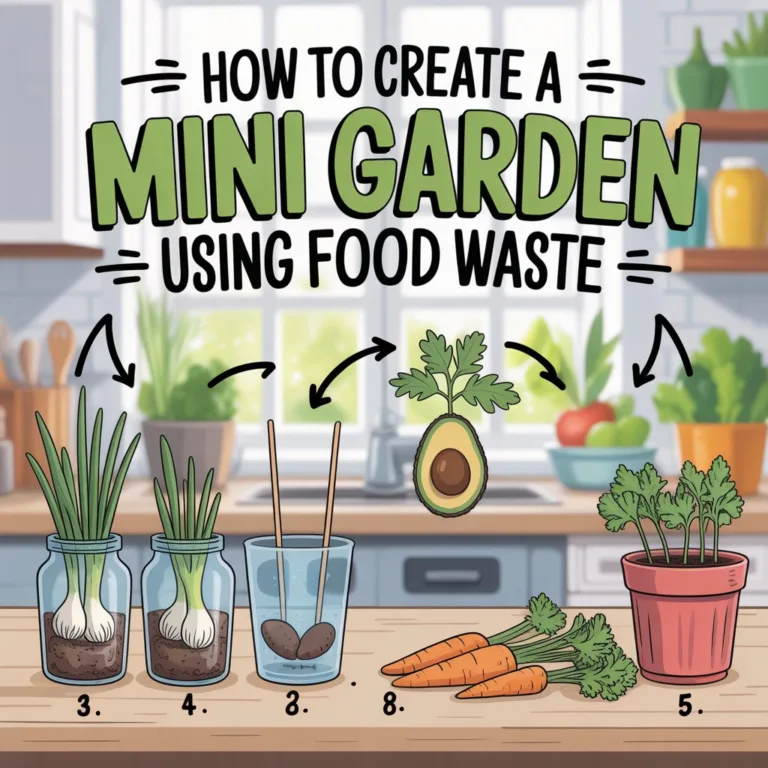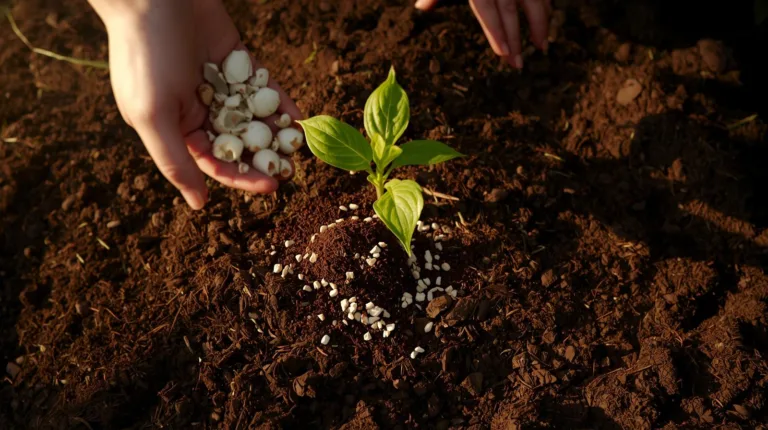Water management is one of the most critical aspects of sustainable gardening and farming. Drip irrigation, a method that delivers water directly to the roots of plants, optimizes water use while reducing waste. For those seeking eco-friendly and budget-conscious solutions, creating a drip irrigation system from waste plastic is an innovative way to recycle materials, conserve water, and support healthy plant growth.

This approach not only benefits plants but also contributes to reducing plastic waste, turning discarded bottles, containers, and tubes into functional garden tools. With a little planning and creativity, you can build a system that suits small home gardens, balconies, or larger vegetable patches.
Understanding Drip Irrigation
Drip irrigation works by slowly releasing water near the root zone of plants. Unlike traditional watering methods, it reduces evaporation, minimizes runoff, and ensures that plants receive a consistent supply of moisture. The benefits include:
- Water Efficiency: Reduces water usage by up to 50% compared to overhead sprinklers.
- Healthy Roots: Targeted watering encourages deep root development.
- Weed Control: Only irrigated areas receive water, limiting weed growth.
- Disease Prevention: Leaves remain dry, reducing fungal infections.
By using waste plastic, gardeners can replicate these benefits sustainably, making drip irrigation accessible and environmentally responsible.
Choosing Materials from Waste Plastic
A variety of discarded plastic items can be repurposed for drip irrigation systems:
- Plastic Bottles: Standard 1–2 liter soda or water bottles are ideal for small-scale systems.
- Plastic Containers: Food containers, jugs, or milk cartons can serve as reservoirs or water distributors.
- Plastic Tubing: Old aquarium tubes, irrigation tubing from previous setups, or flexible plastic hoses work well for distributing water.
- Caps and Lids: Can be modified to control water flow.
Selecting durable plastics ensures longevity and reduces the need for frequent replacements. Avoid plastics that have deteriorated, as they may crack or leak.
Planning Your Drip Irrigation Layout
Before building, consider your garden’s layout and plant requirements. Key factors include:
- Plant Spacing: Measure the distance between plants to determine tubing length and spacing of water outlets.
- Water Source: Identify a nearby tap, bucket, or rainwater collection system as your main water supply.
- Elevation: Gravity can aid water flow, so positioning reservoirs slightly above plant level enhances efficiency.
- Flow Rate: Determine how much water each plant needs per day to avoid overwatering or drought stress.
A simple sketch of your garden with tubing routes, reservoir locations, and plant positions helps streamline assembly and maintenance.
Creating Water Reservoirs from Plastic Bottles
Plastic bottles are ideal for small, controlled watering systems. They can slowly release water over hours or days, depending on the number and size of holes.
Preparing the Bottles:
- Clean bottles thoroughly to remove residues.
- Poke small holes at the base using a needle or pin. The number and size of holes determine the flow rate — fewer holes slow the drip, while more holes increase output.
- For adjustable flow, create a small vent hole near the cap and replace the cap loosely to allow air to enter as water drips out.
Placement:
- Insert bottles upside down directly into the soil near plant roots.
- Partially bury the bottle neck for stability and ensure holes are in contact with the soil.
- For larger containers, cut a side slit and secure them upright, allowing multiple plants to benefit from one reservoir.
Building Tubing Networks from Waste Plastic
Plastic tubing connects reservoirs to multiple plants, creating a network of slow-drip outlets.
Steps to Adapt Tubing:
- Use scissors or a knife to cut tubing to desired lengths.
- Attach tubing to bottle caps or container outlets, securing with rubber bands or heat-shrink seals.
- Poke micro-holes along tubing near each plant to release water gradually. Smaller holes reduce flow and prevent soil erosion.
- Cap tubing ends to prevent unnecessary water loss and encourage pressure within the system.
Flexible tubing allows customization for garden shapes, corners, and plant density.
Gravity vs. Pump Systems
Gravity-Based System:
- Simple and ideal for small gardens.
- Place reservoir above plant level to create natural water flow.
- Flow control can be achieved by adjusting hole sizes or number of outlet bottles.
Pump-Assisted System:
- Suitable for larger gardens or rooftop setups.
- A small solar or electric pump moves water through tubing efficiently.
- Waste plastic reservoirs can still be used as storage containers for pumped water.
Gravity systems are energy-free, while pumps add precision and scalability. Both options are compatible with recycled plastic materials.
Enhancing Efficiency and Sustainability
To maximize performance, consider the following techniques:
- Mulching: Apply organic mulch around plant bases to retain moisture and reduce evaporation.
- Filter Out Debris: Place a mesh or cloth over reservoir openings to prevent dirt from clogging holes.
- Adjust Drip Rate Seasonally: During hot periods, increase water output; during rainier months, reduce flow to prevent overwatering.
- Use Rainwater: Collect rain in large plastic containers to feed your irrigation system. This further reduces environmental impact.
These adjustments increase longevity, reduce maintenance, and ensure optimal plant health.
Benefits Beyond Water Savings
Using waste plastic for drip irrigation combines water conservation with waste reduction. This approach offers multiple environmental and practical benefits:
- Recycling: Repurposes plastics that would otherwise contribute to pollution.
- Cost Savings: Eliminates the need for commercial irrigation systems.
- Education: Demonstrates sustainable gardening practices for communities, schools, and hobbyists.
- Flexibility: Easy to modify or expand as the garden grows.
By integrating these systems, gardeners can create a loop of sustainability — water conservation, waste reduction, and thriving plants.
Maintenance and Troubleshooting
Regular maintenance ensures efficiency and prevents issues:
- Check for Clogs: Remove sediment or algae from tubing and bottle holes.
- Inspect for Leaks: Ensure connections are tight and repair any cracks in plastic reservoirs.
- Monitor Plant Health: Adjust flow if plants show signs of overwatering (yellow leaves) or underwatering (wilting).
- Clean Reservoirs: Empty and rinse periodically to prevent stagnation or algae growth.
Simple observation and timely adjustments extend the system’s functionality and reliability.
Adapting for Different Garden Types
Small Indoor Herb Gardens:
- Use smaller plastic bottles or cut containers.
- Tubing can be minimal; even a single reservoir can water multiple pots.
Vegetable Patches:
- Larger bottles and tubing networks distribute water to rows of crops.
- Adjustable micro-holes allow control over flow for plants with varying needs.
Urban Balcony Gardens:
- Compact drip systems reduce water waste in limited spaces.
- Hanging containers with connected tubing ensure plants at different heights receive sufficient water.
Versatility makes this DIY system suitable for almost any garden setting.
Combining Drip Irrigation with Eco-Friendly Practices
Pairing your drip irrigation system with other sustainable practices enhances garden health:
- Composting: Recycle kitchen scraps into nutrient-rich soil for your plants.
- Mulching: Conserves water and reduces soil temperature fluctuations.
- Native Plants: Require less water and thrive in local conditions.
- Natural Pest Control: Minimize chemical use, preserving soil and water quality.
Together, these methods create a resilient, self-sustaining garden ecosystem.
Inspiring Creativity with DIY Solutions
Building a drip irrigation system from waste plastic is also a creative exercise. Gardeners can experiment with:
- Artistic arrangements of containers and tubing.
- Colorful recycled bottles to brighten garden areas.
- Layered or vertical drip systems for aesthetic appeal.
- Integration with hydroponics or raised beds.
DIY innovation demonstrates that sustainability and functionality can go hand in hand.
Encouraging a Sustainable Gardening Lifestyle
By making a drip irrigation system from waste plastic, you engage in mindful gardening that respects both plants and the planet. The act of repurposing materials, saving water, and nurturing growth reinforces eco-conscious habits that extend beyond the garden.
Every recycled bottle, every carefully poked hole, and every drop of water contributes to a system that is practical, sustainable, and creative. With patience and observation, your garden thrives, showcasing the power of innovation and environmental responsibility.
Embracing this approach inspires others to see waste not as a problem but as an opportunity — a chance to craft solutions that nourish both the earth and your plants.

Sofia Greenfield is a sustainable gardening expert and environmental educator who inspires families and urban gardeners to cultivate green spaces responsibly. She shares practical tips on growing vegetables, herbs, and flowers using eco-friendly and recycled materials, emphasizing the joy of gardening while protecting the planet.



